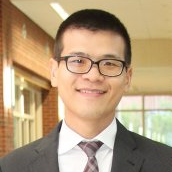Shape Memory Polymers and Multifunctional Composites: Materials, Properties, Fabrications, and Applications
A special issue of Polymers (ISSN 2073-4360). This special issue belongs to the section "Polymer Applications".
Deadline for manuscript submissions: closed (31 December 2022) | Viewed by 14944
Special Issue Editors
Interests: cardiovascular heart valve biomechanics; multi-scale modeling; biomaterials design
Special Issues, Collections and Topics in MDPI journals
Interests: additive manufacturing; advanced polymers and multifunctional composites; intelligent sensors and structures; nondestructive inspection; structural health monitoring and prognostics
Special Issues, Collections and Topics in MDPI journals
Special Issue Information
Dear Colleagues,
The vision of programmable materials is to integrate an “on-demand” function into a material, which allows the material to automatically adapt to the changing environmental conditions in a predetermined manner. Shape memory polymers and composites belong to an emerging class of these programmable materials, with shape memory and recovery as triggered by an external property such as light exposure, temperature, or electricity. Recent advances in the experimental, theoretical, and computational investigations and developments have been made for a better understanding of the physical, chemical, and applied principles of stimuli-responsive (programmable) materials. These innovative developments have opened new research doors to in biomedical devices, aerospace, textiles, civil engineering, bionics engineering, energy, electronic engineering, and household products.
This Special Issue on “Shape Memory Polymers and Composites: Materials, Properties, Fabrications, and Applications” will focus on original research papers and comprehensive reviews, dealing with more recent innovation and trends as well as cutting-edge research in the synthesis, processing and additive manufacturing of shape memory polymers and composites, as well as the development of programming routes for one-way and, in particular, for two-way shape memory effects. Topics of interest for this Special Issue include, but are not limited to, the following:
- Basic phenomena and theories
- Materials, structures, and materials design
- Material synthesis and functional properties
- Thermo-mechanical characterizations and material-structure-property relationship
- Constitutive modeling for shape memory polymers and/or multifunctional composites
- Theoretical predictions and simulations for shape memory polymer and composite materials
- Advanced manufacturing technology, such as 3D/4D printing with shape memory effects
- Smart textiles for medicine and healthcare
- Applications of shape memory polymers/composites:
g., sensors, bio-inspired materials, biomimetic devices, wearable technology, tissue engineering, etc.
All research areas considered relevant as long as experimentations, theoretical development, and/or predictive simulations are the main study focuses.
Dr. Chung-Hao Lee
Dr. Yingtao Liu
Guest Editors
Manuscript Submission Information
Manuscripts should be submitted online at www.mdpi.com by registering and logging in to this website. Once you are registered, click here to go to the submission form. Manuscripts can be submitted until the deadline. All submissions that pass pre-check are peer-reviewed. Accepted papers will be published continuously in the journal (as soon as accepted) and will be listed together on the special issue website. Research articles, review articles as well as short communications are invited. For planned papers, a title and short abstract (about 100 words) can be sent to the Editorial Office for announcement on this website.
Submitted manuscripts should not have been published previously, nor be under consideration for publication elsewhere (except conference proceedings papers). All manuscripts are thoroughly refereed through a single-blind peer-review process. A guide for authors and other relevant information for submission of manuscripts is available on the Instructions for Authors page. Polymers is an international peer-reviewed open access semimonthly journal published by MDPI.
Please visit the Instructions for Authors page before submitting a manuscript. The Article Processing Charge (APC) for publication in this open access journal is 2700 CHF (Swiss Francs). Submitted papers should be well formatted and use good English. Authors may use MDPI's English editing service prior to publication or during author revisions.
Keywords
- Shape memory polymers
- Shape memory effect
- Multi-stimuli responsive
- Microstructure
- Characterization
- Advanced manufacturing
- 3D/4D printing
- Constitutive modeling
- Simulation
- Multifunctionality
- Sensors and actuators
- Bioinspired devices







